Xeriscaping: this landscaping technique will transform the way you garden
Discover xeriscaping and create a beautiful, easy-care, environmentally-friendly yard that will save you money


Xeriscaping is truly the buzzword among garden designers and landscapers at the moment. Xeriscapes are simply yards designed with slow-growing, drought-tolerant and site-appropriate plants that require little irrigation and other maintenance, thereby reducing your workload, as well as saving you money.
For a long while, we’ve taken for granted the cool, fresh water that flows from the faucets in our homes. But, as the cost of this service climbs higher and higher, many people are now wondering how best to reduce their usage. A great place to start is in the garden, where you can replace irrigated lawns and thirsty flower displays with a xeriscape.
Taking steps to increase water efficiency also benefits the environment, reducing the burden on natural resources in States such as California, Texas, Oregon, Nevada, Utah, and New Mexico that are experiencing unprecedented periods of drought.
Here, we ask three top landscape designers how to create a low-maintenance garden xeriscape in a back or front yard.
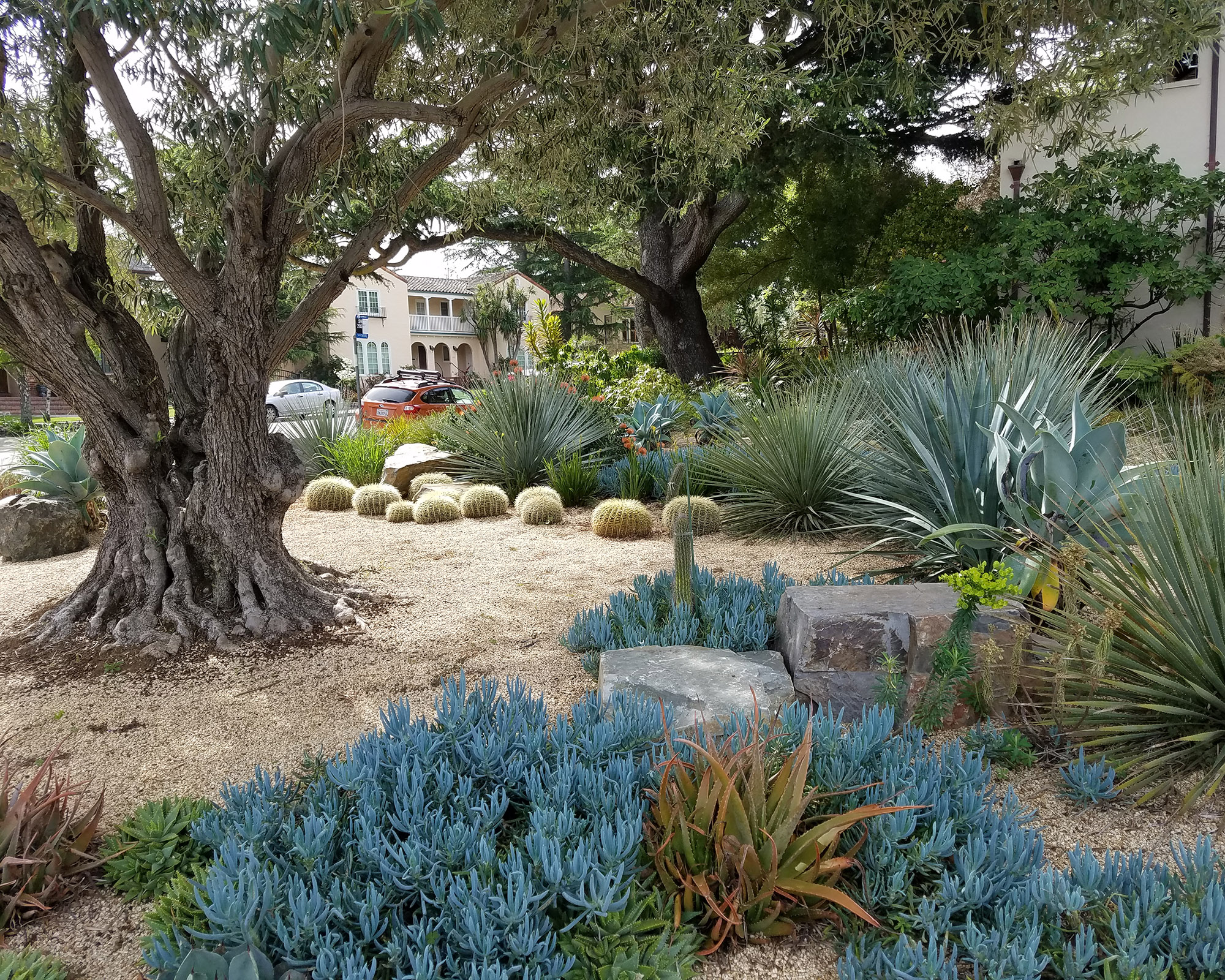
What are the benefits of xeriscaping?
Reducing water usage and creating a sustainable low-maintenance landscape are among the main benefits of xeriscaping, says Steve Letz of San Diego-based Letz Design Landscape. 'In some cases, water consumption may be reduced by 50 to 70 percent,' he adds.
'Using native plants as part of your garden design also has environmental benefits since they require no fertilizers, which can pollute our waterways. These tough plants are also rarely attacked by pests and diseases, reducing the need for pesticides, which many research studies show are detrimental to beneficial insects such as bees.'
An additional benefit is that in the city of San Diego, and many others in Southern California, water districts offer rebates to homeowners who find alternatives to grass and remove turf and replace it with climate-appropriate plants, he continues.
'Here, you will receive a rebate on your water bill of $2.00 per square foot for a minimum of 250 square feet and a maximum of 5,000 square feet of turf removed. Then all you need to do is add at least three drought-tolerant plants per 100 square feet, as well as install a water catchment system such as a rain barrel or swale to collect stormwater,' Steve explains. Choose a model which works aesthetically in your scheme, such as this one from Amazon which has a wood-grain-effect finish.
'The city encourages this practice to avoid stormwater flowing into the streets and from there into the Pacific Ocean, along with the harmful waste and toxic chemicals it picks up from the roads along the way,' Steve continues.
More information can be found about rebates at bewaterwise.com. Other dry States offer similar schemes, so check what your local water company is offering and how to make a claim.
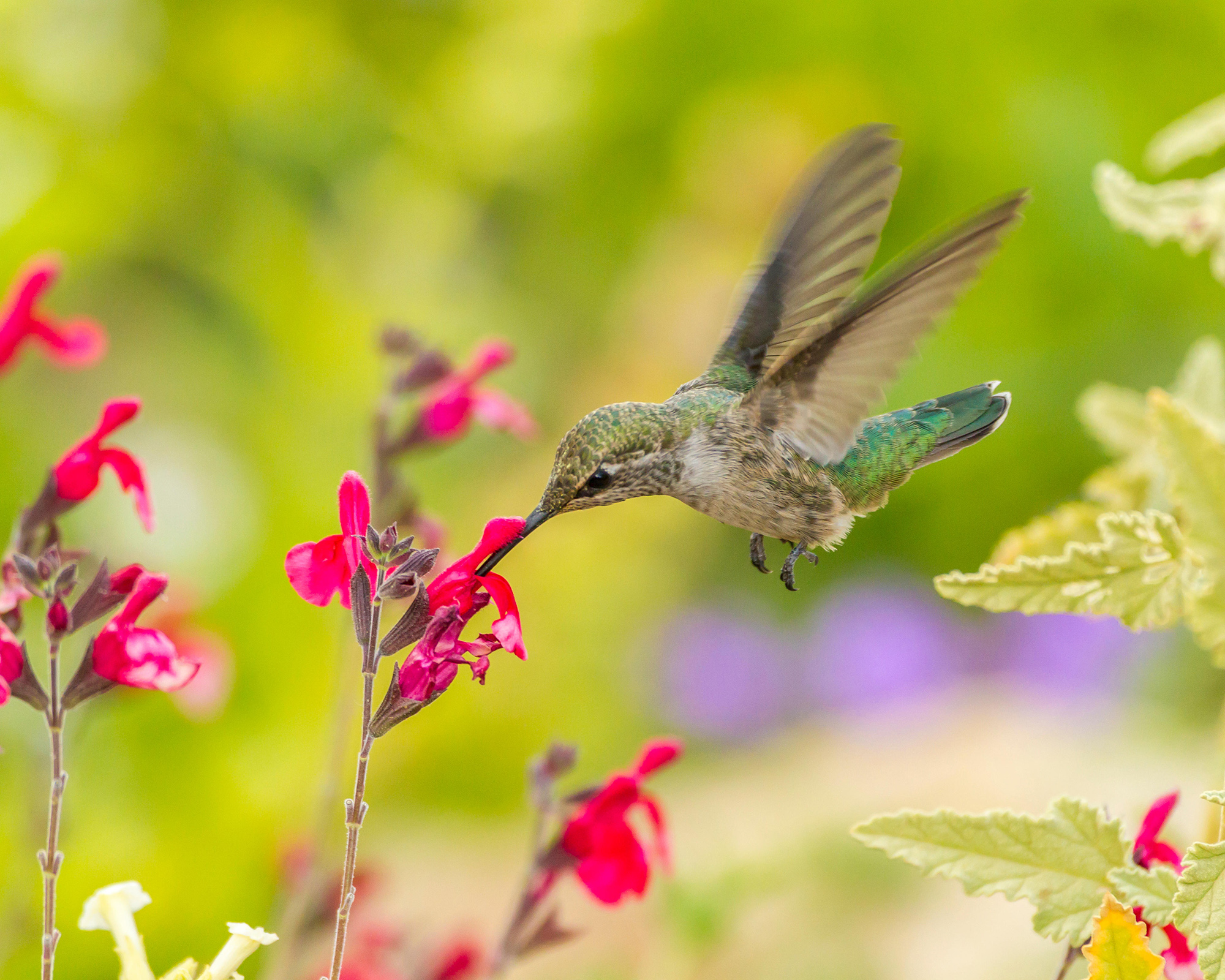
What type of locations are best for xeriscaping?
The ideal location for a xeriscape is in an area that receives low levels of rainfall and plenty of sunshine, which many drought plants prefer, although there are options for shade, too. Most soils are suitable, apart from those that are permanently wet, such as marshy areas.
Landscape designer Ketti Kupper of Conscious Living Landscapes says that while xeriscapes can be created in sun or shade, plant selections should be made relative to the site conditions. 'For example, a north-facing site that receives only a little sun might sustain a tropical plant style palette of drought-tolerant ferns, tillandsias or other air plants, and shade-tolerant succulents.'
Landscape architect Warren Simmonds, the owner of Simmonds Associates, Inc, which is based in the San Francisco Bay area, says that areas of that country that used to be cooler and wetter are now experiencing more droughts and higher temperatures, making them also suitable for xeriscaping.
'We are currently installing no-water-use zones created from desert plants and succulents that, thanks to climate change, are thriving in our locality, but are drawn from the arid environments of Southern and Eastern California, Arizona and beyond,' says Warren.
He adds that sloping gardens, where rain drains rapidly down into the valley, make especially good locations for these low-water plantings.

How to create a xeriscape: the first steps
You can choose to convert your whole yard into a xeriscape or perhaps select an area that is currently turfed or filled with water-guzzling non-native plants.
Warren Simmonds suggests looking at your garden in terms of water-use zones. Generally speaking, we will probably have zones of plants that need a medium amount of watering located close to the house, to provide more flower-pop and lushness, he says.
'As we move away from the home, we structure the landscaping to become more wild, segueing into areas of native and drought-tolerant plants, which are considered low-water-use zones.'
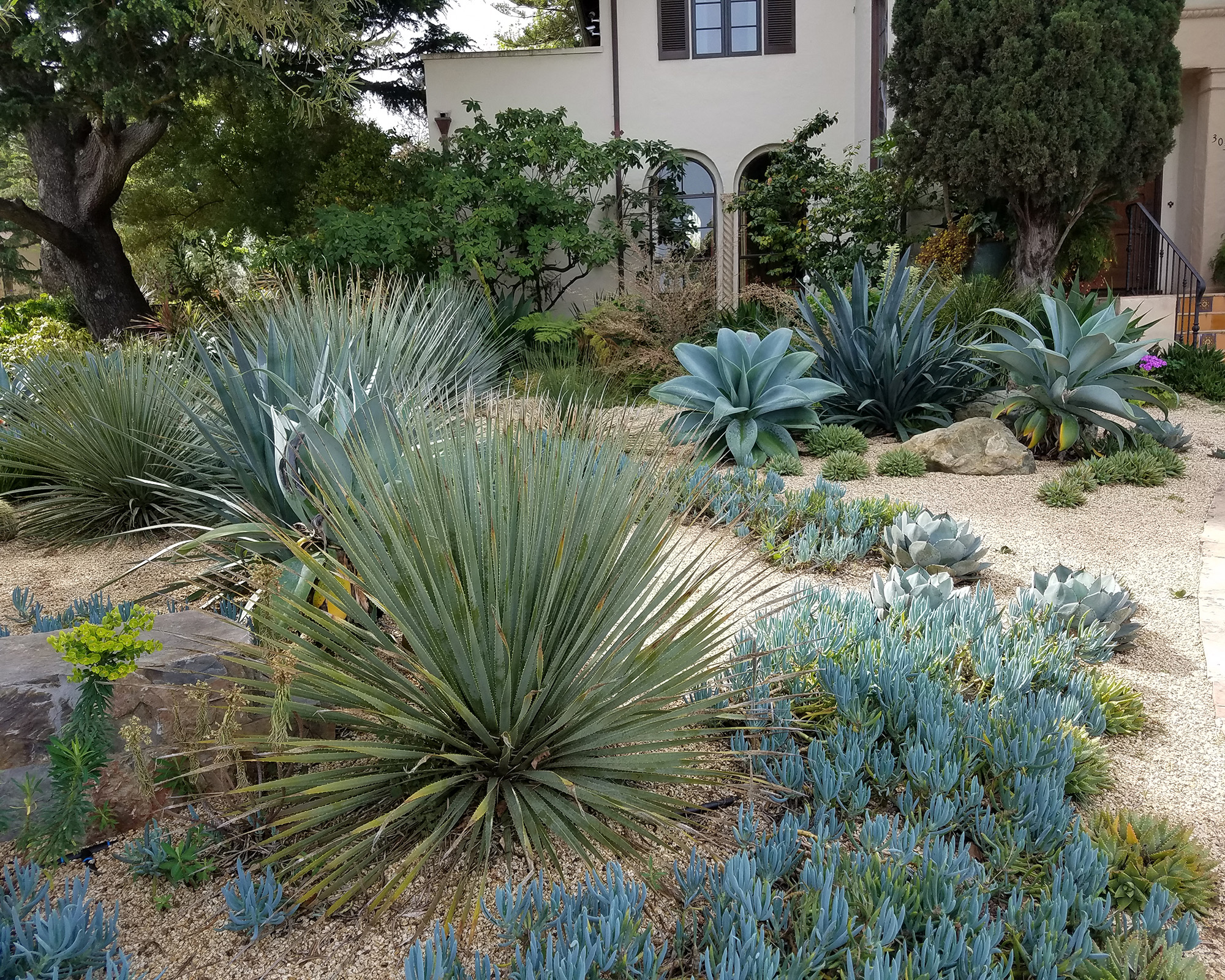
The next step, he says, is to check the soil so that you can match the right plants to your specific conditions. 'There is no "best" soil for xeriscaping – just use what you have.
'We regard the practice of importing tons of good soil as very wasteful and damaging to the environment,' he adds.
'We do not advocate rototilling, due to its negative effects on the soil, such as long-term compaction; the breakdown of fungal (mycorrhizal) networks that aid root health and growth; and the destruction of worms and their burrows, which loosen and aerate the soil,' Warren continues.
'Instead, we add organic mulches over the surface, and in planting holes, or if the soil is particularly infertile or poor, into shallow holes made in the ground with a pitchfork.'
Some drought-tolerant plants that are adapted to desert environments or rocky landscaping will survive in soils with little or no organic matter, and may suffer in deep, nutrient-rich beds, however. If you are unsure about your soil type, ask an expert to help you to assess it and provide suitable plant recommendations.
Steve Letz suggests enrolling in an online WaterSmart Landscape Makeover Program workshop, run by San Diego County Water Authority, which takes you through the process of installing a xeriscape in more detail.
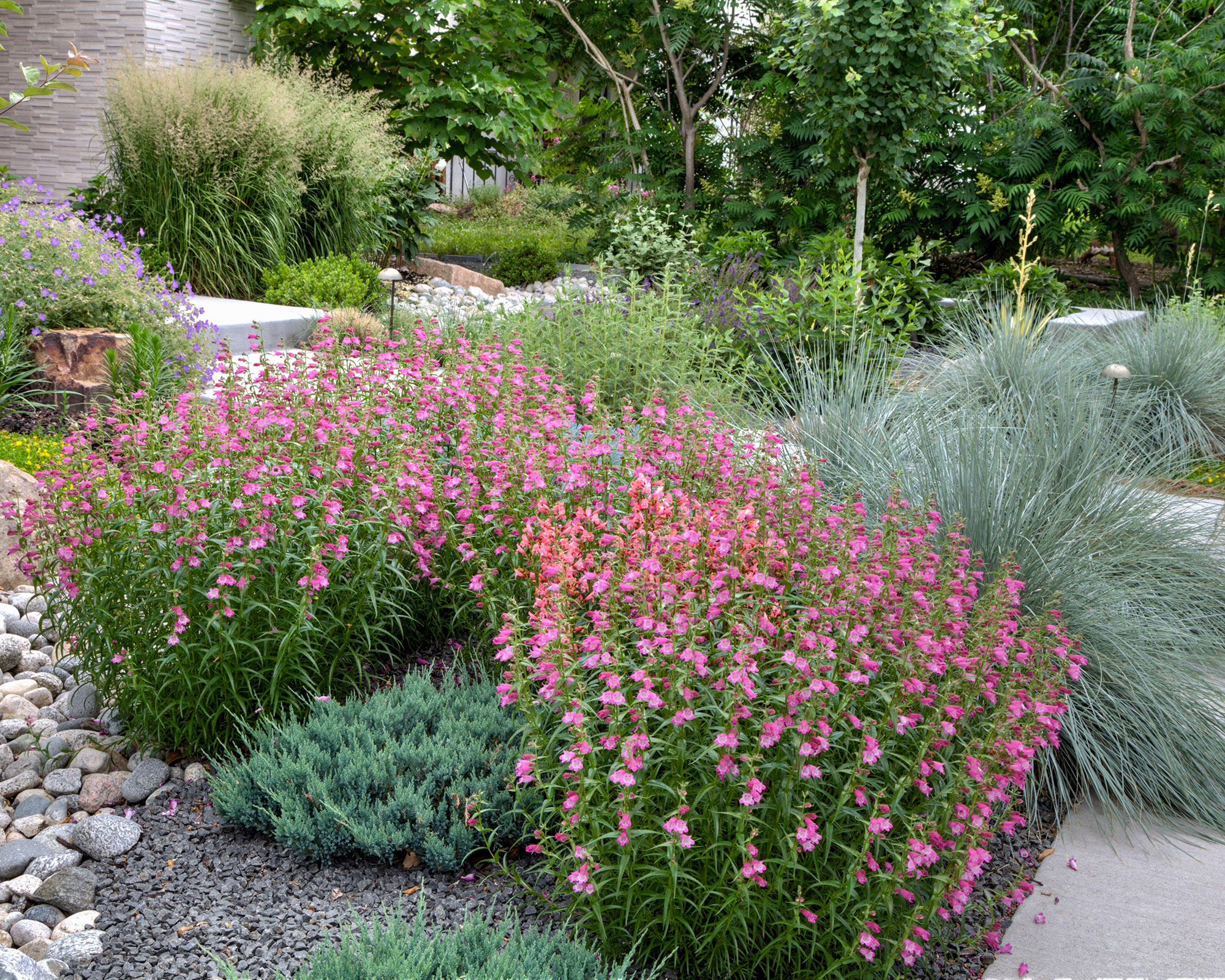
Designing a xeriscape
Steve Letz recommends sketching out your design on a simple to-scale paper plan or using a computer garden design program to plot the positions of the features and plants you wish to include.
Ketti adds: 'Don’t be afraid to leave empty unplanted spaces; they can make a pleasant contrast to the plants.' Adding additional forms, such as small walls, seats, and garden art can also add to the interest of your final composition, Ketti continues. Or, you could try landscaping with boulders.
She suggests using contrasting colors and shapes; combining fleshy succulents, strappy types of ornamental grasses, large-leaved plants, and delicate and airy forms with large and architectural plants to give your scheme structure.
Also, do your homework before buying plants, paying particular attention to their final heights and spreads: 'A common mistake is including a plant that will grow too large for the location – many shrubs, salvias, lavenders, and grasses look terrible if they have to be cut to fit,' she adds.
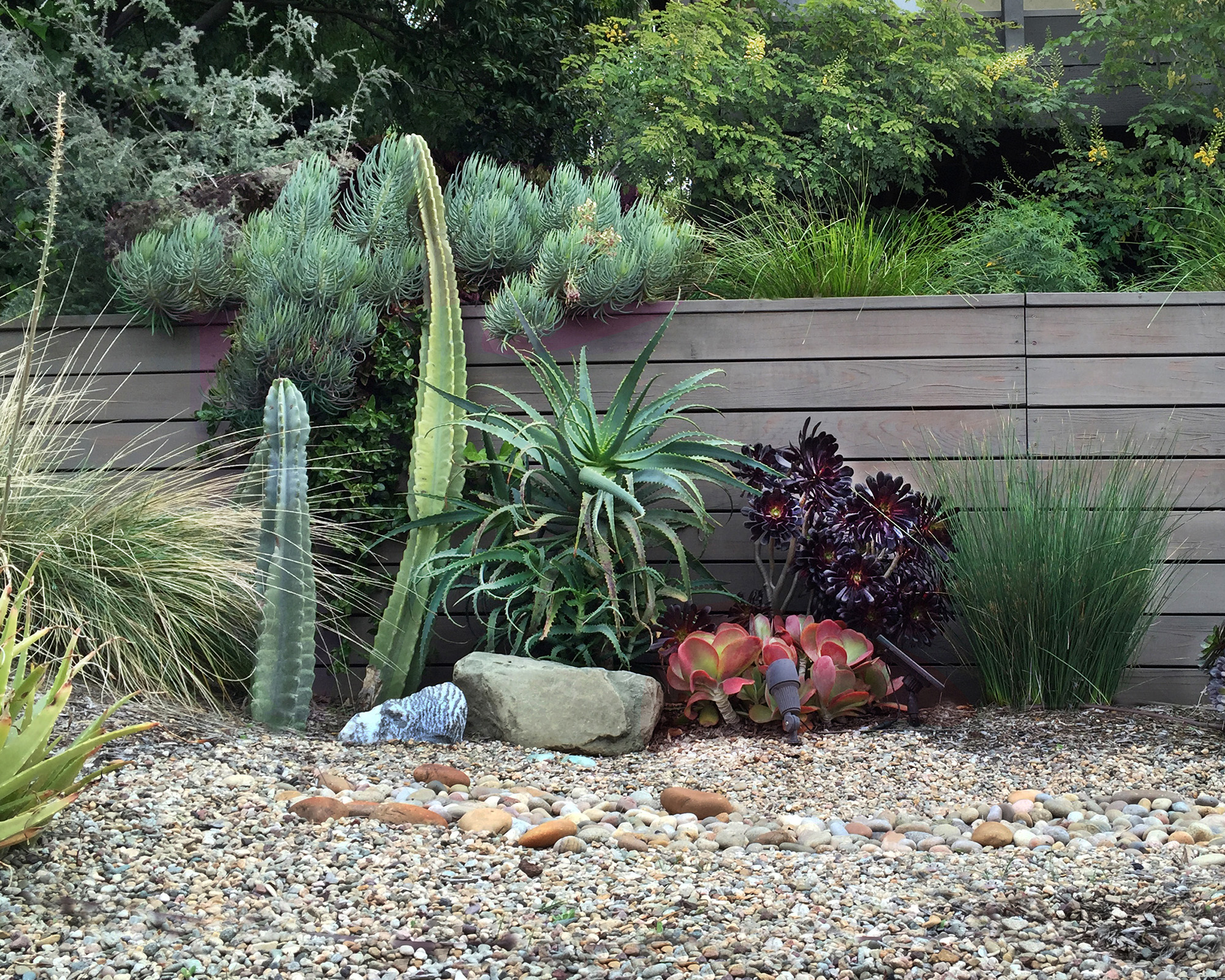
Choosing and siting plants
When creating a xeriscape, use plants that are naturally drought tolerant or suit the specific site conditions of your yard, so that they will thrive unaided once established. Plants native to your locality will generally be suitable, and many nurseries now stock a good selection.
Yucca, agaves, the chalk duddleya (Dudleya brittonii) and barrel cactuses are native options for a warm climate such as Southern California. We love the Blue American Agave, available at Nature Hills.
Augment the US plants with those that hail from other Mediterranean-type climates such as Southern Europe, North Africa, Western Asia, Australia and South Africa, such as chalksticks (Senecio mandraliscae) and the dew plant (Oscularia deltoides).
When planting drought-tolerant species, make sure you do not bury their stems or leaves, which may cause them to rot.

Creating privacy and shade in your xeriscape
Where privacy and shade are needed, Ketti suggests a mix of deciduous and evergreen trees and shrubs to add height and structure: 'If your yard needs less privacy but more sun in winter, try deciduous plants such as the crepe-myrtle (Lagerstroemia) known for its heat tolerance; a cercis, or a chitalpa, which are all beautiful options.'
For year-round privacy, she suggests evergreen or semi-evergreen shrubs and drought-tolerant trees. When making your plant selections, ask the nursery whether the leaves, flowers or fruits will stain paving, and if they are poisonous and therefore unsuitable for gardens used by children or pets, she adds.
'Favorites of mine for gardens with Mediterranean-type climates include arbutus, chilopsis, Cordia boissieri, elaeagnus, Eriobotrya japonica, Acca sellowiana, Lophostemon confertus, melaleuca, nandina, olea, pittosporum, prosopis, punica, and Sophora arizonica.'
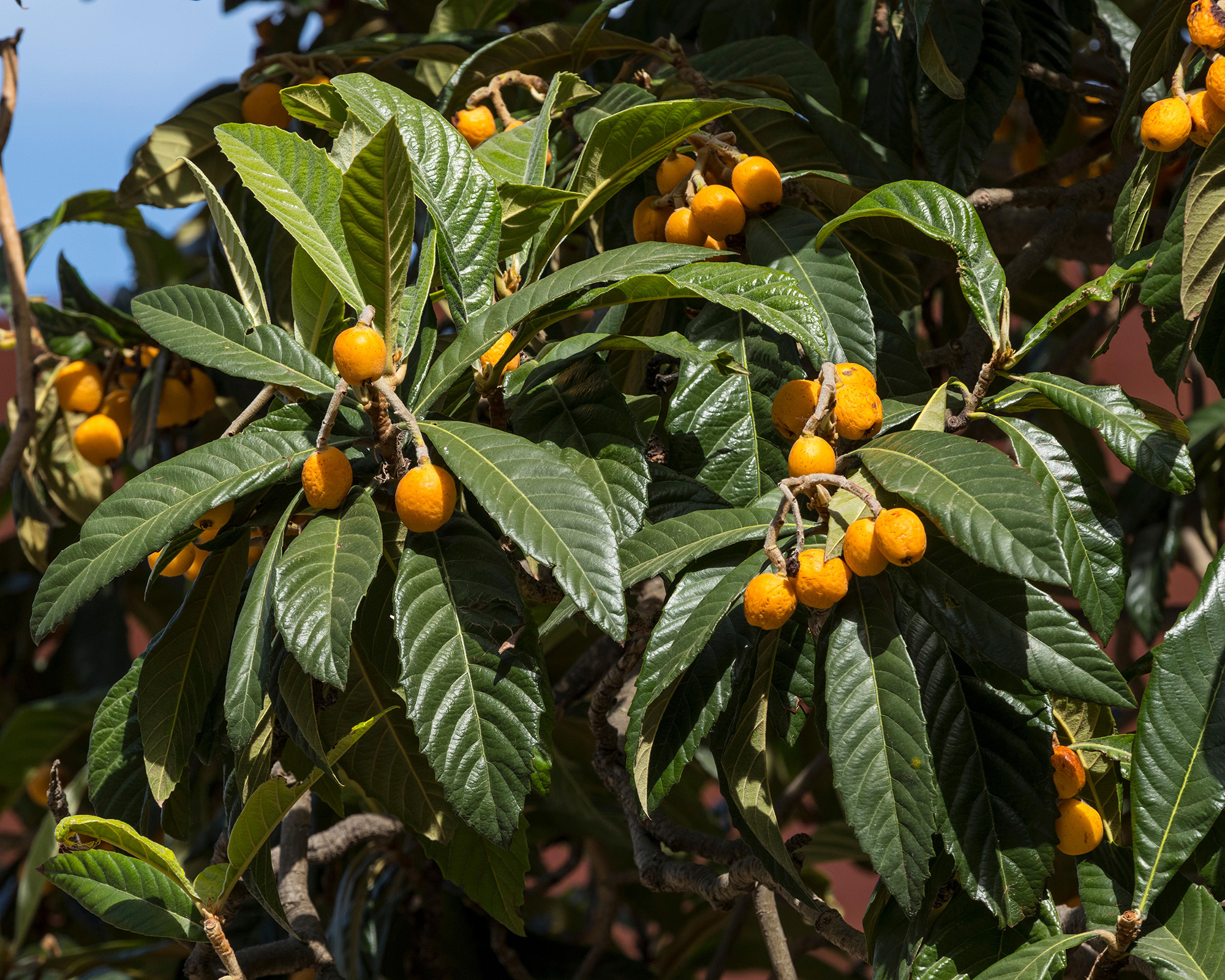
Warren Simmons warns against impulse purchases: 'Don’t buy a plant just because it looks good. Many commercial nurseries still sell invasive plants, or even illegal ones, such as bamboo and juniper which are banned in Marin County because they pose a fire hazard.'
He also recommends checking the water needs of each plant to ensure your local climate will deliver this in rainfall. 'When selecting succulents and desert plants, check their low-temperature tolerance, too, if you live in a region that experiences cold winters,' he advises.
'And, avoid installing drought plants in low-lying areas where water will collect and potentially rot their roots and stems. If necessary, add cactus planting mix on top of the existing soil to raise up the rootballs.'
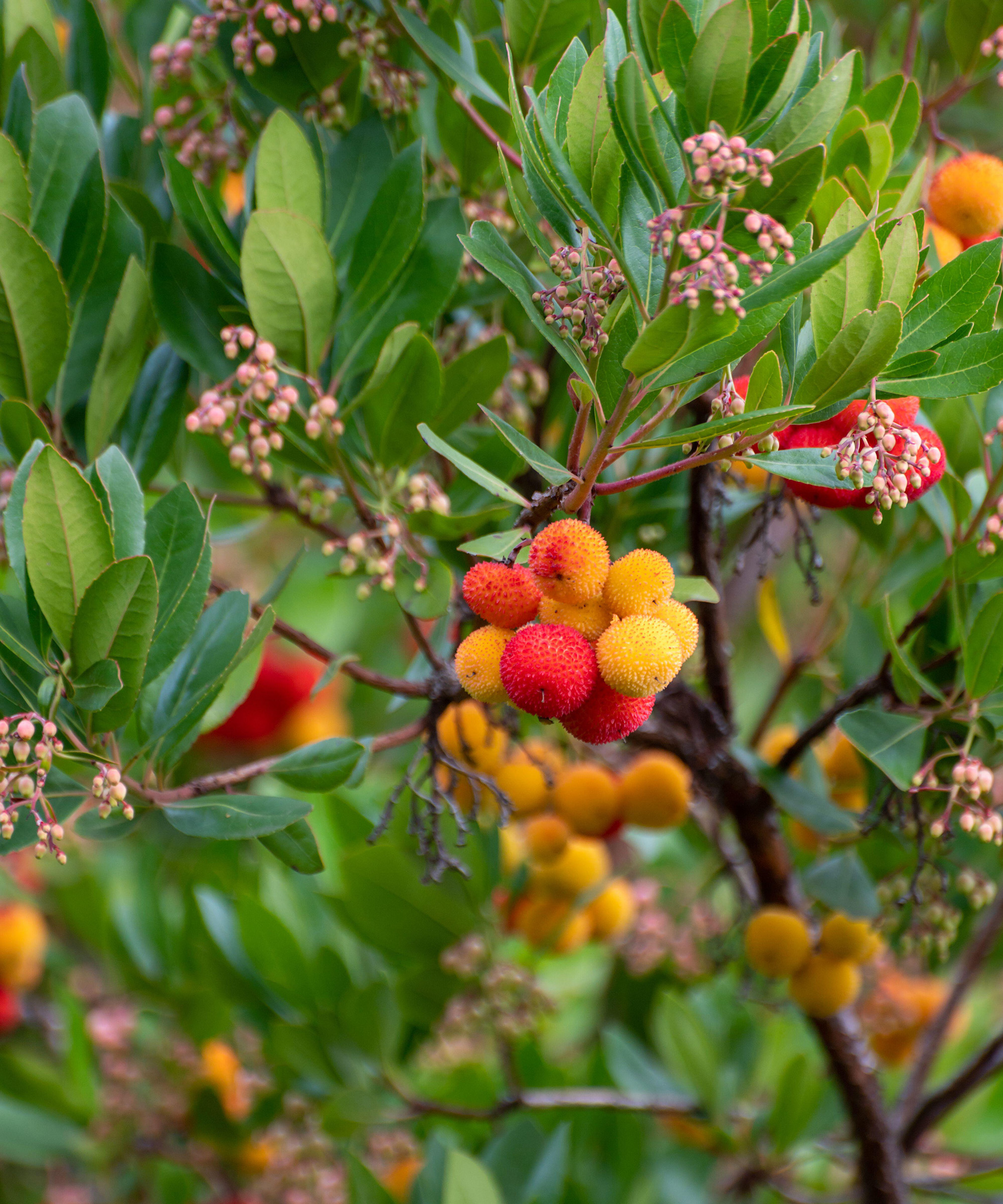
How to make container displays for a xeriscape
You can add drama to your design by combining low-water plants in a container garden. Try a few succulents, cacti or native plants in a pot filled with gritty compost and with drainage holes in the base.
Ketti says, 'Choose plants suited to the size of the container, and provide support, if needed, for taller plants. Grouped containers of varying sizes can make a beautiful feature in a corner of the yard.'
Your pots will need watering occasionally during the growing season, but only when the top layers of compost feel dry. Many of these plants dislike wet winter weather so protect them undercover during periods of heavy rain.
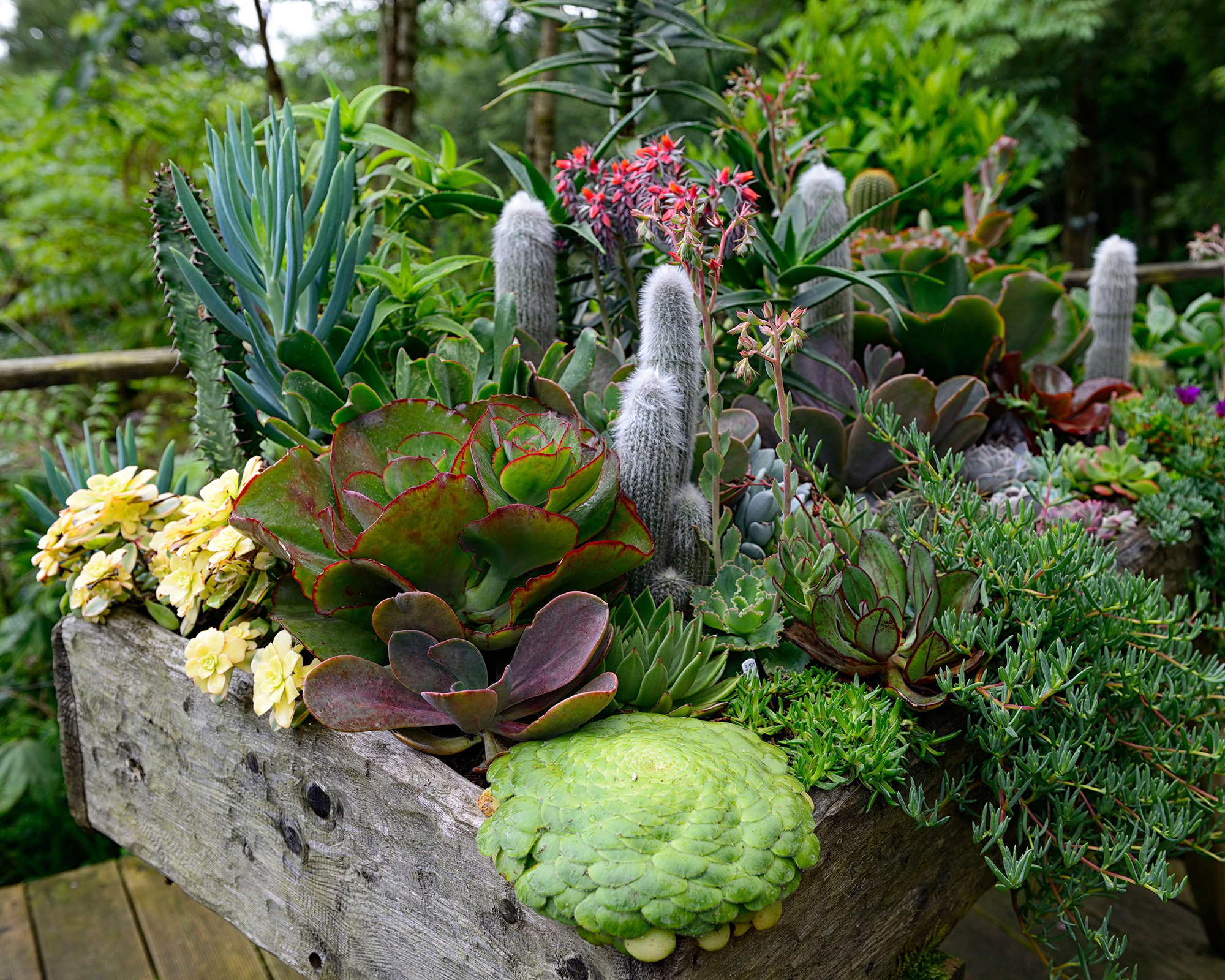
3 planting and maintenance tips for xeriscaping
Established xeriscape plants are among the easiest to maintain, requiring little or no fertilizing and minimal pruning, unless plants have outgrown their allotted space.
However, they will require some aftercare, so follow these tips to ensure yours thrive.
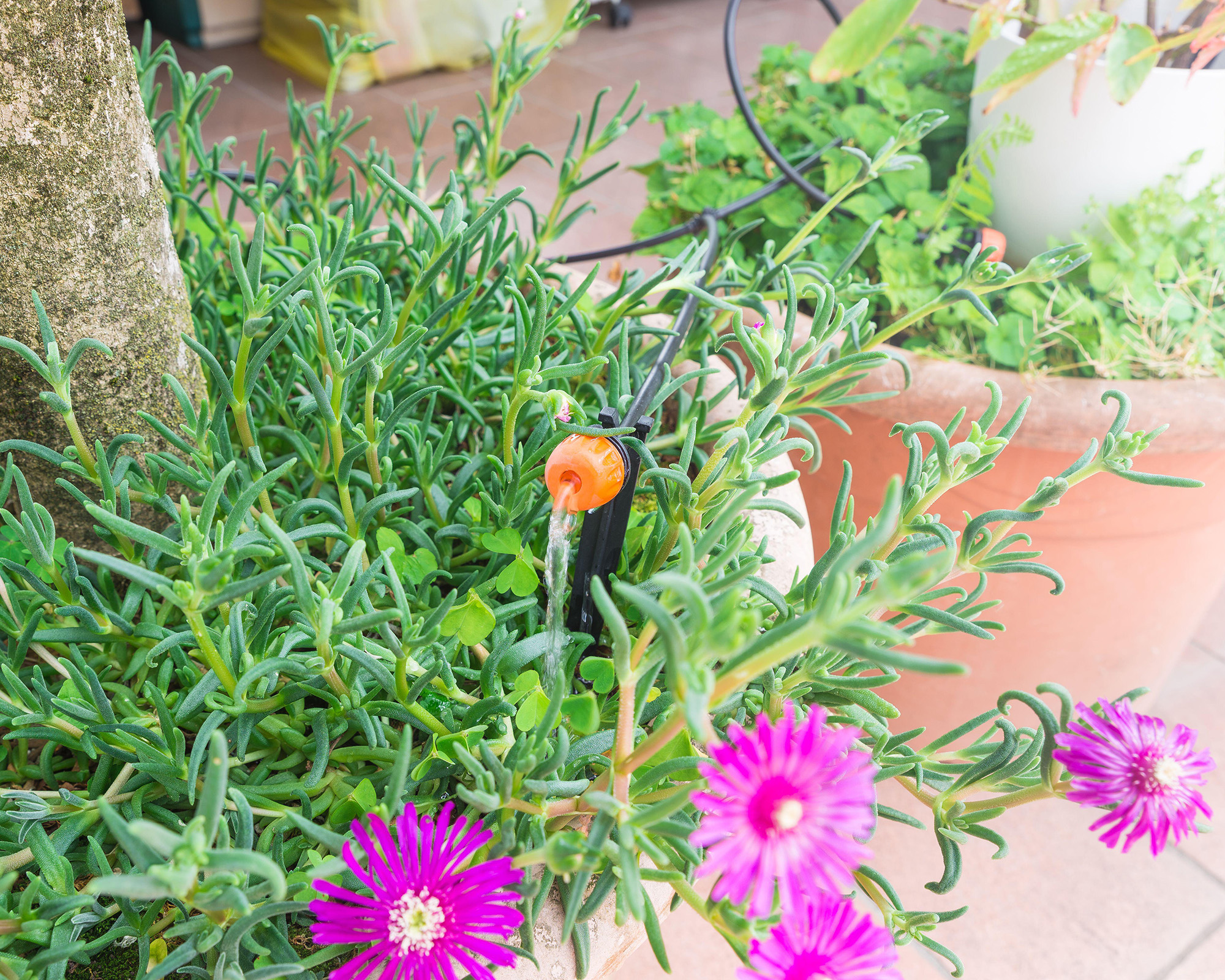
1. Use smart irrigation
Xeriscape plants are drought tolerant when established, but most will require some irrigation for a few weeks after planting, or for longer periods in the case of shrubs and trees. Others may also need a little water during prolonged periods of drought.
Steve Letz recommends buying an in-line or direct-emitter drip irrigation system with a Smart Controller that regulates the timing and quantity of water delivered, depending on the ambient temperature and soil moisture levels. These systems target the soil over individual plants’ roots rather than watering the whole garden, which would be wasteful and irrigate the weeds as well as your ornamentals.
With each application, apply sufficient water for it to drain down into the ground, which will encourage the plant roots to follow – scant watering that only reaches the top layers of soil will promote shallow root systems that are more vulnerable to drying out.
'For a xeriscape, the ability to use, and the patience to fine-tune, a smart self-watering system is key,' says Warren. Water too much and the drought-lovers may rot, but water too little after planting and they may not root well, so take time to get the levels just right while plants are young and vulnerable.
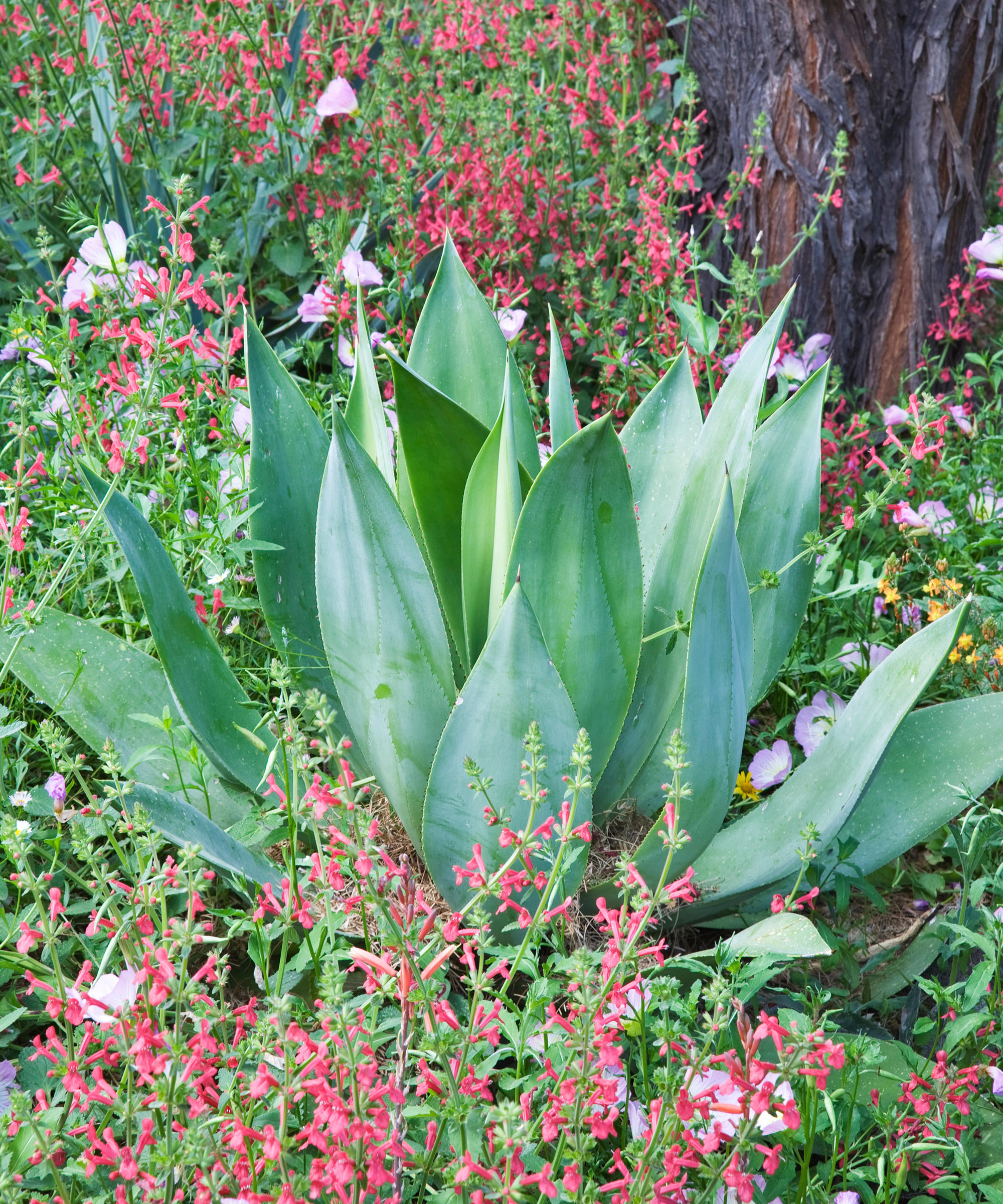
2. Mulch your xeriscaped landscape
Weed the site and water well before placing a two-to-three-inch-deep mulch of organic matter such as compost over the surface. Mulching helps to improve the soil structure and its ability to hold water, while also locking in moisture and reducing weed growth. Organic materials also slowly decompose and help to deliver the low levels of nutrients many drought plants require.
Leave a gap around woody-stemmed shrubs and trees, so that any moisture the mulch retains will not rot their stems, and reapply the mulch every year in spring. For cacti and succulents, apply either a mulch of fine wood chips once every year or two, or use an inorganic mulch of pebbles, gravel, or stones, which will help to keep the plants’ stems and leaves dry and reduce the risk of rotting.
If using an inorganic mulch, feed cacti and succulents with a single dose of all-purpose liquid or granular fertilizer at the beginning of the growing season.
Warren adds: 'In California, due to the real risk of wildfire, we are also using non-flammable mulches, such as crushed granite and pebbles, for all plantings adjacent to houses and other structures.'

3. Remember to prune and deadhead plants
The slow-growing trees and shrubs suited to xeriscapes rarely require much pruning, particularly if you select plants that will not outgrow their allotted space when mature.
'The only other maintenance is to cut back deciduous grasses at the beginning of the growing season and deadheading plants,' says Steve Letz. You can then add these to a compost heap to supply material for your organic mulches.

Zia Allaway is a garden book author, editor, and journalist, and writes for a range of gardening and women’s magazines, including Easy Gardens, Homes & Gardens and Livingetc, as well as The Guardian and The Daily Telegraph newspapers. She has also written books for the Royal Horticultural Society and Dorling Kindersley publishers, including Eco-Gardening, Compost, Low Maintenance, Practical House Plant Book, Practical Cactus & Succulent Book, Indoor Edible Garden, What Plant Where, and the Encyclopedia of Plants and Flowers.
